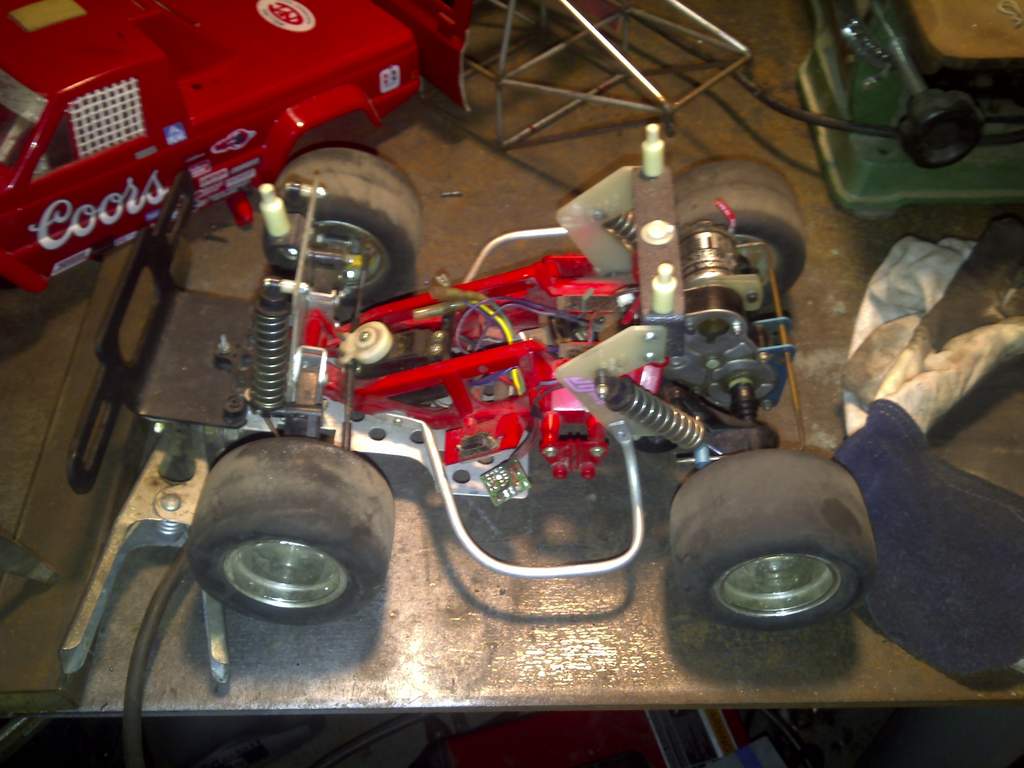The Frog's horizontal, laydown shock positioning isn't any better or worse than having vertical shocks. Direct, approximately vertical attachment to the midpoint of the trailing arm gives the same result as having a horizontal shock attached to a strut over the pivot point. The geometry is different, but the results are the same.
The Frog's stock suspension fails because 1) the trailing arm is too flexible 2) the shocks are terrible 3) there is wear and binding at the pivot point (aluminum rubbing and cutting into ABS plastic). Address those issues, and the trailing arm works just as well as any other trailing arm, no matter the shock position.
No major race winning RC cars used laydown shocks because almost none used trailing arms (A-arms or H-arms just work better on most modern, i.e. post mid 1980s tracks). The last Championship RC car I can think of that used trailing arms was the Yokomo Dogfighter in 1985. It's tough to put laydown shocks on A-arm's because the shocks tend to get in the way of each other; they need to be stacked or side-to-side. The original Schumacher Cougar (I believe?) used F1 style bellcranks and inboard laydown shocks with A-arms in the front, but it was just extra weight and parts to break so the design was switched to more conventional upright shocks in later versions.
I would make a wild guess that street legal 1:1 cars don't use laydown shocks due to space constraints within the structure, not because of geometry issues. However, F1 cars, the most advanced racing machines in the world, use inboard laydown shocks, and they wouldn't have it any other way

.
So, long story short, Frog stock shocks and flexible trailing arms = bad, laydown shocks = just fine.


